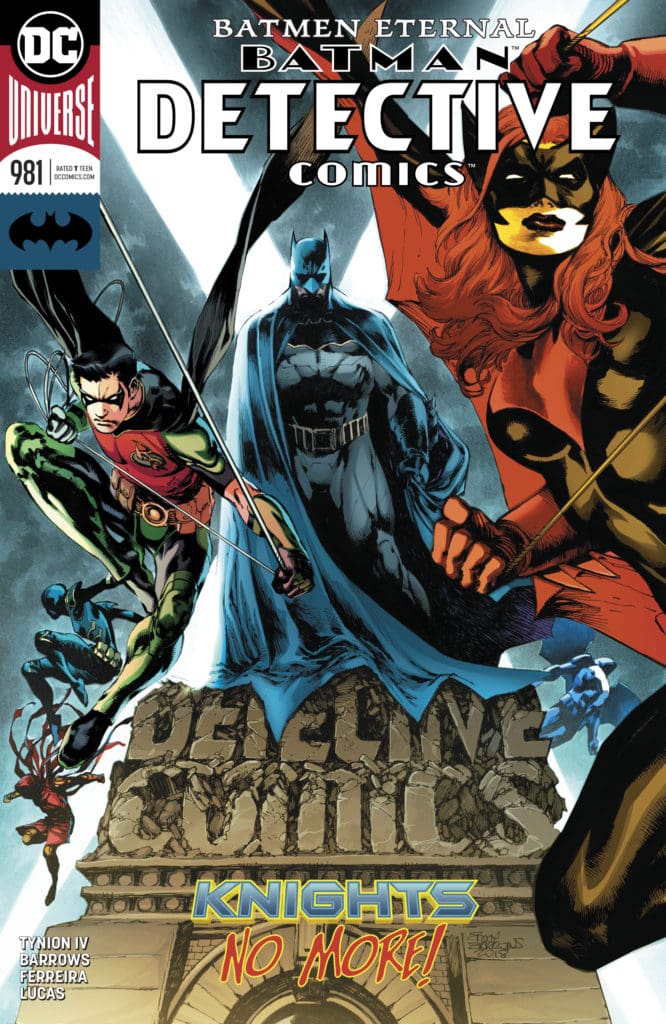When writer James Tynion IV took over Detective Comics at the beginning of DC’s Rebirth, he said he wanted what happened in his stories to be the most important events in the characters’ lives. Maybe that would be true if Tom King weren’t about to have Batman and Catwoman tie the knot in the main Bat book. However, while Tynion didn’t always succeed, his run–which ends with this week’s Detective Comics #981–is among the best Bat Family stories ever written.
Tynion began by assembling an unlikely group of heroes and rogues and he reassembles what’s left of them here. Once united to save Gotham, the team fractured in the previous arc after Batwoman killed fellow teammate, Clayface. However, the surviving team band together again here to prevent the future dystopia an older, alternate timeline version of Tim Drake aka Red Robin revealed.
Though Batman assembled the team, Tynion’s story has always really been about the opposing types of heroism Batwoman and Red Robin represent to him. Batwoman, with her military past and Patton-like father, tends authoritarian while Tim strives for teamwork through a unified Bat Family. However, what Tynion has gradually revealed in the past two years is that both approaches eventuallly lead to the same point: any attempt to control the Bat brand leads to fascism, misunderstanding and unnecessary death. Batman may be a controlling bastard, but he seems to understand (or at least luck into through his lone wolfishness) is that the Bat myth simply can’t be institutionalized. It is governed by too few people to not end up corrupted and this final chapter in Tynion’s story prove it to Batwoman, Red Robin and the reader.
Still, strong as some of the characters’ endings are, others feel glossed over. Tynion’s handling of Spoiler’s arc has been scattered at best and its resolution here feels too quick and easy. Ditto, on some level, Cassandra’s aka Orphan. The character was clearly traumatized after Clayface’s death and giving her a glimpse of an alternate future is perhaps too facile even if it’s also kind of a brilliant plot twist. Regardless of those issues, though, those final twists are delivered with such a confident flourish–both artistically and narratively–that they’re fairly easy to forgive.
The issue reunites Tynion with his original art team. Penciler Eddy Barrows and inker Ebera Ferreira gave the series a moody, gothic feel in its early days and it feels right that his story ends that way too. Add Adriano Lucas’s rich coloring and it’s easy to end up staring at the intricate splash pages. Every page is meticulously constructed and while the art is dense and expressive, it also never feels overwhelming. It takes skill to make such complex storytelling so easy to digest and the art gives the major plot reveals and character turns the appropriate gravitas.
Not every DC book weathered Rebirth well—in fact, it’s safe to say it was a rough time for most of the imprint’s books. However, Detective Comics remained solid and exciting from the get go and writer James Tynion IV deserves most of the credit. This issue–the last in his run–beautifully concludes the story he set out to tell. And while it’s not in the nature of comics to just stop, his ending is so satisfying, it’ll make you wish Detective Comics ended here. It’s hard to imagine anyone topping it.


